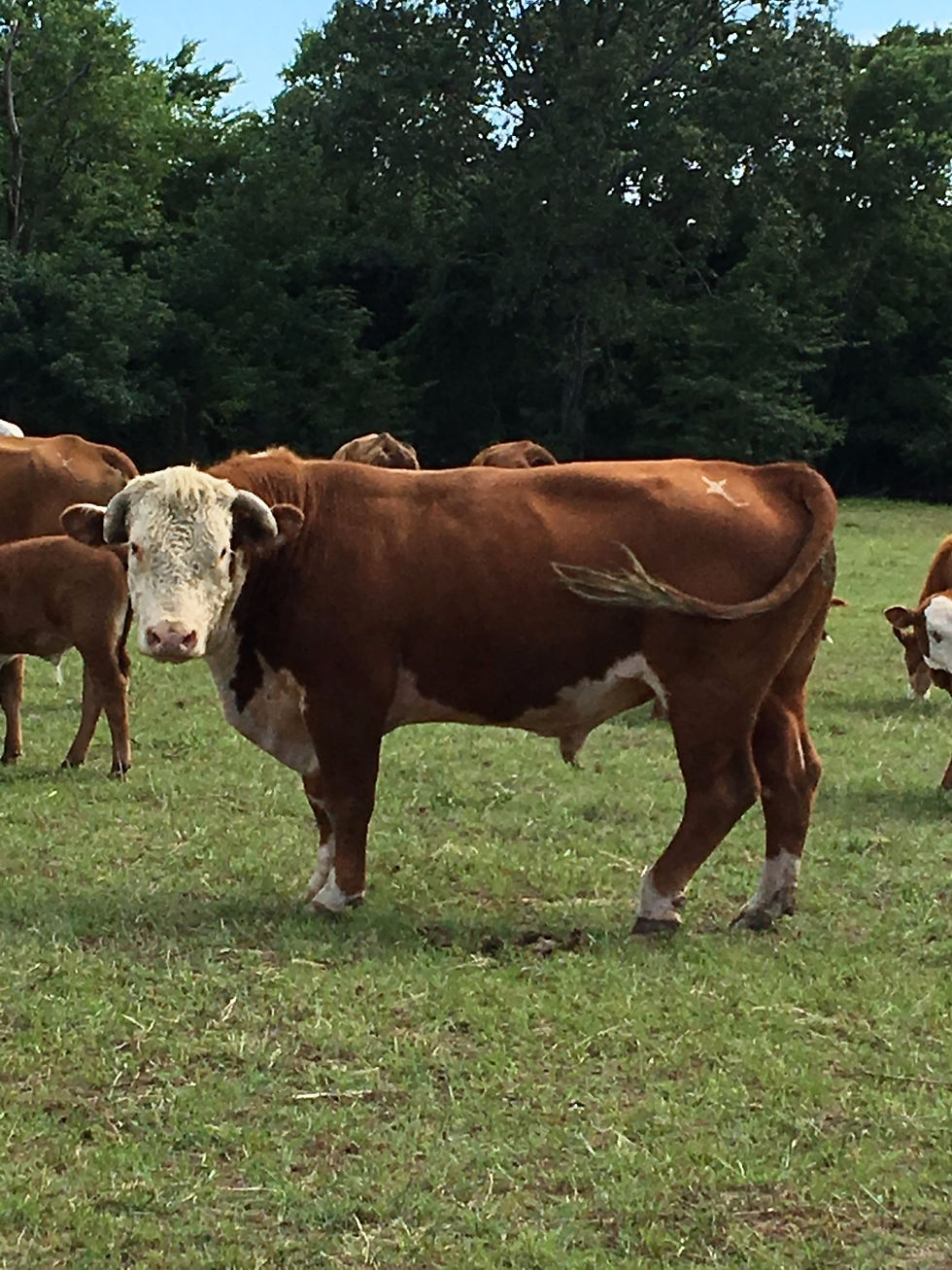Weight Management of Livestock
- bradshawcattle
- Dec 1, 2017
- 3 min read
Weight is also an operational benefit to monitor an animal's health.

Weight tracking throughout the animal's life allows the rancher to recognize changes in health in a more time efficient manner to correct health issues before they become terminal. When livestock has issues with weight individually within a herd, it can typically be determined that there is an individual health issue rather than a herd management problem. An anemic bull or cow is less likely to produce at the rate needed to profit from that particular animal and can cause more input costs to keep the animal consistent even if they are able to produce. Weighing can help determine these health issues at a swifter speed for cattlemen. Due to this benefit, culling becomes an easier scientific decision rather than a guess or gamble.

Weight management prior to mating leads to better reproduction rates and reduces inputs associated with breeding season. Heifers should be a body score of 5 or higher based on the standardized scale. As heifers they will require more weight to convert to energy as they experience mating and birth for the first time. Cows should be between a body condition score of 4 to 5 for health birthing. (Obviously there are other factors in a health mother and calf, but weight should play a large impact in decision for mating practices.) Weight management allows a producer to more accurately predict when a cow or heifer will calf as well or an approximate of months bred. Knowing this information will increase the feed efficiency as mother have a variation of feeding necessities throughout their pregnancy.

Proper weighing equipment will reduce the time & effort to automatically capture weight as the cattle are being processed. The weigh station is a basic system that allows the producer to weigh the livestock in the chute. A scale located on the chute is the more time efficient option for weighing cattle. Chutes that provide this weight on a screen create the ability to accurately dose each head. This allows for a standardized weighing system capturing data each time that the cattle are run through the chute whether for regular vaccination or disease control in an animal. Although many producers can estimate within a very close range, for the best result and most beneficial dosing, weight should be known to the exact measurement for each head of cattle. It is always best to weigh the actual pounds of livestock rather than just estimating. When a cattleman can precisely vaccinate livestock, their herd will be able to produce for a higher profit.

Feed costs can be controlled properly when a producer is able to measure weight by feed conversions. Herd which all have a similar weight issue alert the rancher that a supplementation may be necessary in that pasture due to a lack of mineral or forage. Winter feeding plans can be made at a more cost-effective choice when a producer knows what weight goals are before marketing any livestock. Meeting market required weight ranges for bringing premiums in markets or sales is also achievable with a weight management system. Producers who evenly match cattle into groups for sale will allow for these premium prices.

Altogether, weighing and weight data should be at the core of any operation.
What are some of the important factors for your operation that weight allows you to track or determine?









































Comments